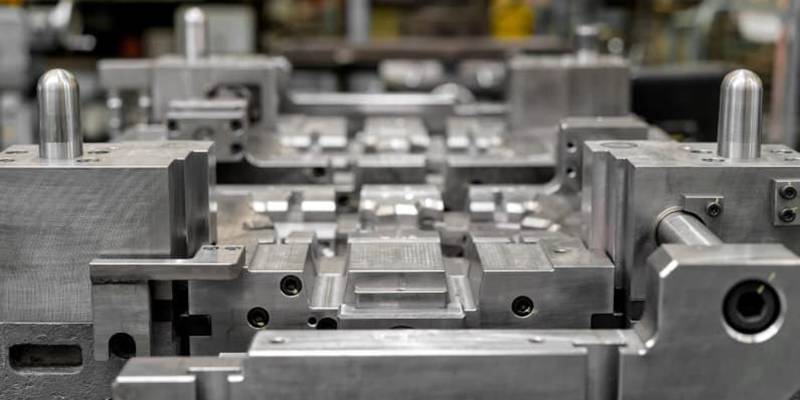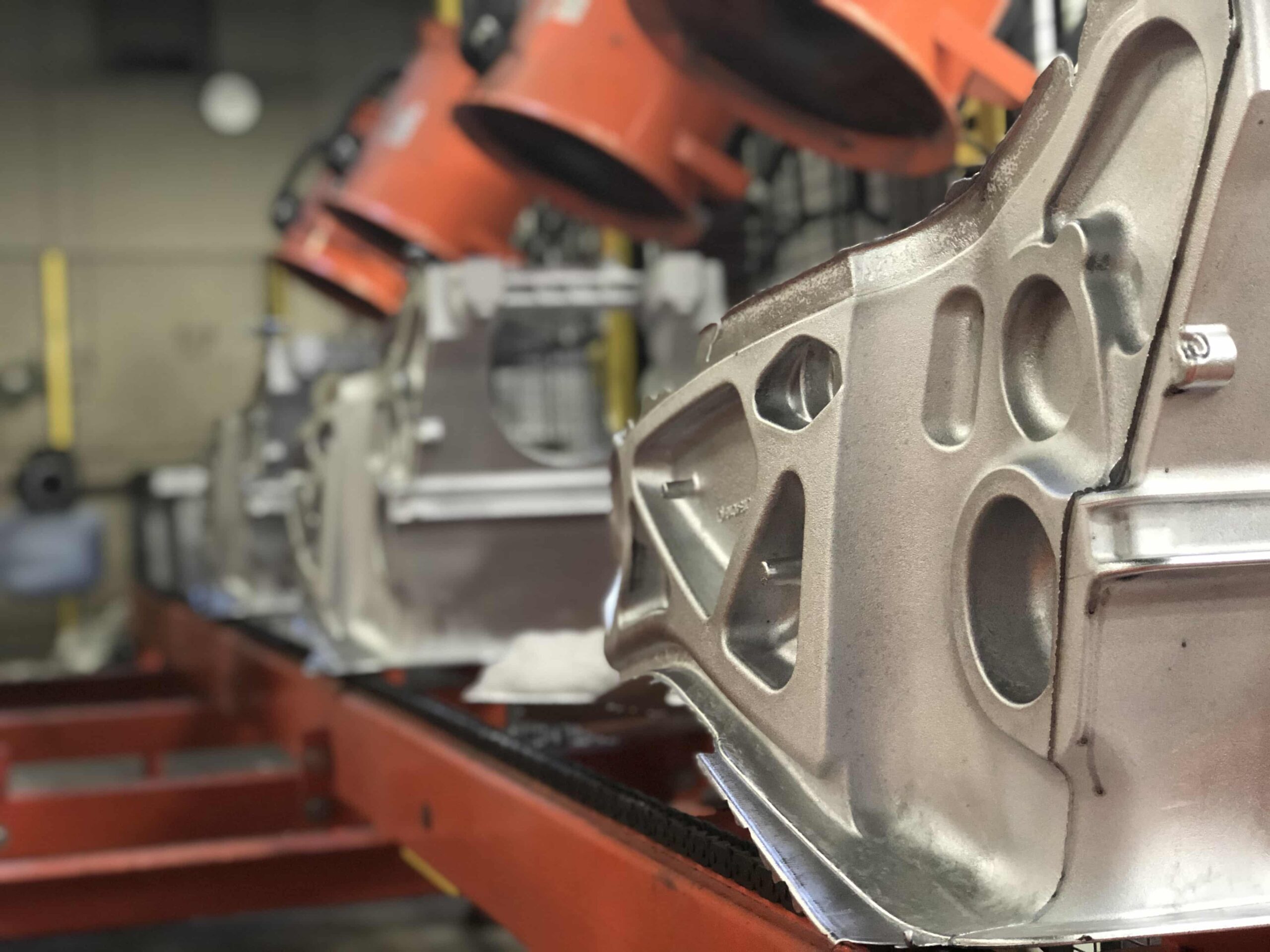Authoritative Overview of Wisconsin Aluminum Foundry and Its Impact on U.S. Manufacturing
Checking Out the Ingenious Strategies Utilized in Modern Aluminum Foundries
Modern aluminum foundries are going through a substantial change through the fostering of ingenious methods. Advanced casting methods, smart automation, and lasting practices are improving manufacturing procedures. These innovations not only improve effectiveness yet also address ecological issues. As the market evolves, the combination of electronic modern technologies plays a necessary role. Comprehending these changes is essential for comprehending the future of aluminum manufacturing and its effects for global markets. What exists in advance in this dynamic field?
Advanced Casting Techniques

Additionally, improvements in thermal control and mold layout have actually added to even more constant casting outcomes. These developments permit better control of cooling down prices, decreasing issues and boosting mechanical homes. Because of this, suppliers can produce lightweight yet resilient elements, meeting the raising needs of different industries, consisting of vehicle and aerospace, for high-performance aluminum components.
Smart Automation and Robotics
The combination of clever automation and robotics in aluminum foundries marks a significant development in producing performance. These technologies enable accuracy and uniformity in production procedures, drastically reducing human mistake and enhancing security. Automated robot systems take care of repetitive jobs, such as molding, pouring, and cooling, allowing human drivers to concentrate on more complex obligations that require important thinking and oversight.
Furthermore, ai-driven analytics and smart sensing units give real-time data monitoring, helping with anticipating maintenance and reducing downtime. This leads to maximized source allotment and enhanced power usage, contributing to general sustainability in manufacturing.
In addition, the flexibility of robot systems enables fast modifications to altering manufacturing demands, enhancing versatility in production. As foundries significantly take on these advanced technologies, they not just enhance operational efficiency but likewise place themselves as leaders in advancement within the steel casting market.
Additive Manufacturing in Foundries
Transforming traditional production methods, additive manufacturing is transforming aluminum foundries by making it possible for the creation of complex geometries that were previously unattainable. This technique enables the layer-by-layer building of elements, significantly decreasing material waste and shortening manufacturing times. As an outcome, foundries can create complex layouts that improve performance and functionality, accommodating the expanding demands of various markets.
Additive manufacturing helps with rapid prototyping, permitting designers to examine and iterate styles promptly. This dexterity not just increases the development cycle yet likewise helps in determining potential concerns prior to full-blown production begins. The combination of sophisticated materials and procedures in additive production even more enhances the mechanical properties of aluminum components, advertising technology in product style. Subsequently, aluminum foundries that take on these methods place themselves at the center of sector innovations, making certain competition in an ever-evolving market landscape.
Lasting Practices and Recycling
Sustainable techniques in aluminum foundries are significantly concentrated on enhancing recycling processes and taking on environment-friendly casting strategies. These advancements aim to minimize waste and power usage while making best use of the usage of recycled products. As the market progresses, the assimilation of sustainability right into manufacturing techniques comes to be necessary for fulfilling ecological criteria and consumer demands.
Recycling Process Improvements
As industries increasingly recognize the environmental impact of waste, aluminum foundries are adopting ingenious reusing process improvements to boost sustainability. These improvements concentrate on reducing energy consumption and taking full advantage of product recuperation. For example, lots of foundries are executing closed-loop systems that recycle scrap aluminum generated during manufacturing, minimizing waste and decreasing the requirement for virgin materials. Advanced sorting innovations, such as automatic optical sorting, improve the splitting up of different aluminum grades, increasing the efficiency of the recycling procedure. In addition, some foundries are utilizing hydrometallurgical approaches to recuperate aluminum from complex waste streams. By integrating these renovations, aluminum foundries not just contribute to a round economic climate however also lower their carbon impact, straightening with global sustainability goals.
Eco-Friendly Casting Techniques
While standard casting approaches typically entail considerable power intake and product waste, aluminum foundries are significantly adopting green casting techniques that focus on sustainability. Methods such as low-pressure die casting, which decreases air exhausts, and the use of water-based mold launches add to decreased ecological effect. Additionally, developments in 3D printing modern technology enable the development of complicated molds with less product waste. Several foundries are additionally implementing closed-loop systems that recycle water and aluminum scrap, further reducing source consumption. By embracing renewable resource sources, such as solar and wind power, these centers boost their sustainability initiatives. Generally, the adoption of environment-friendly techniques in aluminum casting not just benefits the environment however additionally advertises economic efficiency and development within the sector.
Boosted Quality Assurance Procedures
Enhanced quality assurance steps in aluminum foundries are significantly dependent on innovative assessment innovations and real-time tracking systems. These innovations enable producers to find defects early and assure regular item high quality. By integrating these devices, foundries can markedly enhance their functional effectiveness and decrease waste.
Advanced Evaluation Technologies
Advanced assessment innovations play a crucial role in ensuring the high quality and reliability of aluminum castings. These cutting-edge approaches include non-destructive screening (NDT) strategies such as ultrasonic testing, radiographic screening, and eddy present inspections. Each method permits detailed evaluation of spreadings without jeopardizing their structural honesty. Advanced imaging techniques, such as computed tomography, offer an extensive view of interior attributes, enabling the discovery of problems like additions and voids. In addition, automated optical evaluation systems improve precision by using high-resolution video cameras and artificial intelligence algorithms to evaluate surface top quality. By applying these innovative evaluation technologies, aluminum foundries can successfully reduce problems, making certain that castings satisfy strict market requirements and customer needs.
Real-Time Monitoring Solutions
As manufacturers undertaking for quality in aluminum casting, real-time tracking systems arise as a critical improvement in quality control measures. These systems use advanced sensing units and information analytics to continually track crucial parameters during the casting procedure, such as temperature level, alloy, and stress make-up. By giving instant responses, they make it possible for operators to recognize discrepancies from optimal conditions and make prompt changes. This positive method not only minimizes defects however likewise enhances total effectiveness and minimizes waste - Aluminum Castings. In addition, assimilation of real-time data right into production administration systems assists in better decision-making and improves traceability. Real-time tracking systems play an essential role in preserving high requirements of high quality in modern-day aluminum foundries, making sure that products satisfy rigorous industry specifications.
Digital Twin Modern Technology for Optimization

The combination of electronic twin technology allows foundries to check various scenarios without interrupting real production. This capability fosters a proactive method to maintenance and source administration, ultimately lowering waste and lowering functional prices. In addition, the innovation help in process optimization by permitting designers to visualize the impacts of modifications in real-time, making certain better results. Because of this, aluminum foundries taking on electronic twin modern technology are positioned to achieve higher effectiveness and competitiveness in a progressively requiring market.

Industry 4.0 and IoT Assimilation
The adoption of digital twin modern technology in aluminum foundries belongs to a wider activity towards Market 4.0, identified by the integration of the Web of Points (IoT) into manufacturing procedures. This assimilation enables real-time tracking and information collection from numerous machinery and equipment, bring about enhanced functional efficiency. Sensors embedded in makers collect critical data, which is examined to enhance manufacturing operations and predict maintenance needs.
IoT gadgets help with interaction between various production phases, enabling for smooth sychronisation and minimizing downtime. By leveraging cloud computer, foundries can store and assess large quantities of data, making it possible for more enlightened decision-making. This technology additionally supports remote administration, where operators can manage procedures from anywhere, enhancing responsiveness to manufacturing challenges. Generally, the fusion of Industry 4.0 and IoT within aluminum foundries is changing conventional practices, making them more agile and receptive to market demands.
Frequently Asked Inquiries
What Are the Key Advantages of Aluminum Over Other Metals?
Aluminum supplies countless benefits over other steels, including its light-weight nature, outstanding rust resistance, high thermal and electric conductivity, pliability, and recyclability, making it a favored option for various applications throughout several industries. - Metal Castings
Just How Do Modern Foundries Manage Hazardous Materials?
Modern foundries take care of harmful materials via rigid safety methods, advanced purification systems, and recycling approaches. Routine training guarantees employees understand ideal practices, while monitoring systems identify and reduce possible dangers to keep a risk-free workplace.
What Is the Typical Life Expectancy of Aluminum Castings?
The normal lifespan of aluminum spreadings varies from 20 to 50 years, relying on factors such as environmental problems, usage, and maintenance. Correct care can prolong their durability and performance substantially over time.
Are There Any Kind Of Health Dangers Linked With Aluminum Foundry Work?
Yes, aluminum factory job poses health dangers, consisting of respiratory issues from inhaling fumes and dirt, skin irritability from contact with molten metal, and prospective direct exposure to hazardous chemicals. Correct precaution are important to mitigate these threats.
Exactly How Do Shops Make Sure Worker Safety And Security in High-Temperature Environments?
Foundries carry out rigorous security methods, including protective equipment, temperature tracking systems, and routine training. These measures ensure that employees are equipped to manage high-temperature settings, reducing dangers and advertising a more secure workplace.
Many innovative casting techniques have emerged in aluminum foundries, revolutionizing conventional procedures. Lasting practices in aluminum foundries are increasingly focused on boosting recycling processes and taking on green casting methods. Numerous foundries are implementing closed-loop systems that reuse scrap aluminum generated throughout production, minimizing waste and lowering the requirement for virgin products. While standard casting methods often involve considerable energy intake and product waste, aluminum foundries are progressively embracing green casting techniques that focus on sustainability. While numerous industries are significantly adopting digital innovations, aluminum foundries are leveraging digital twin innovation to improve operational performance and enhance manufacturing procedures.